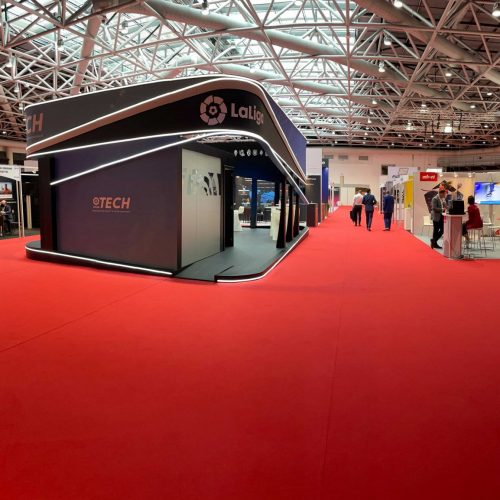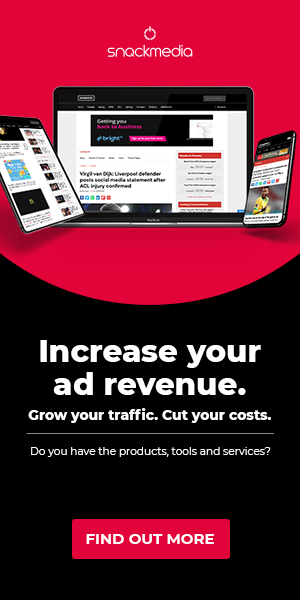Interview with Southampton FC’s Jim Lucas
It has been a little while since our last digisport interview on UKSN. We’re delighted to welcome Jim Lucas, Communications Officer at Premier League outfit Southampton. The club is settling well into the top flight of football here in England after a break of a 7 years, a time that saw them go as low as the League 1 before two successive promotions saw them back with the best last summer. Jim’s answers give a great insight into how football clubs use social media and what they see as the future of the industry.
Hi Jim. Thanks for taking the time out to answer a few questions. Be great to start with a quick overview of your role at the Saints, who works with you and and what it involves?
I’m part of a small media and communications department, which consists of two communications officers – of which I am one – plus two audio-visual officers, all working under the club’s head of media. We are responsible for all content output and media management/PR. I personally have taken on responsibility for the club’s social media presence, and as such have dedicated quite a lot of my first year at the club to improving and developing our work on those platforms.
All five members of the media department contribute to our social media platforms, but I have taken the lead on that front over the past year – particularly since our promotion to the Premier League. We don’t have a dedicated social media manager, but we haven’t let that stop us innovating and searching for ways to strengthen our social presence. We’ve sensed huge value in engaging with our supporters that way, so we’re determined to keep working on making our social presence even better. We’re now active on Twitter, Facebook, Vine, YouTube, Instagram and Google+. We’re also looking into using Foursquare.
What does a typical day entail for you at the Saints?
As anyone working in football will tell you, no single day is the same as another – I can be writing reaction or preview pieces for our official website, interviewing a player on camera, working on our next matchday programme, liaising with the external media or dealing with anything else thrown at a football club press officer. The one constant, I suppose, is that I am always keeping a close eye on updating Twitter and Facebook. I try to ensure we’re as responsive and informative to our fans as possible, and that we give our content the best possible platform to be seen by the people who matter most to us – our supporters.
How would you describe Southampton’s approach to social media and digital in general?
We’re extremely keen to innovate and be the first to do things. For example, we were the first Premier League club to use Vine. Throughout the club there is a mantra of never happy to stand still, so we’re always looking for ways to be the best we can possibly be. That attitude very much applies to our social and digital strategies.
And do you have specific set objectives for what you do?
We don’t particularly set any numerical targets or anything like that. We simply want our content to inform and engage our supporters as well as possible, and we will always look for more – and better – ways of doing that.
The club have been on Twitter since 2009, that’s almost 4 years now, and gained close to 100k fans. What have you found works best on the platform when it comes to engaging with fans?
Without a doubt, it’s the exclusive, behind-the-scenes content that particularly gets our fans going. Something seemingly so trivial like tweeting an iPhone photograph showing a couple of the players at the training ground can be stunningly well received. We are always looking for opportunities to demonstrate our players in their natural surroundings and at their most human.
As you said before, the club has a presence on different platforms, Facebook, and YouTube especially. How does your approach differ depending on the platform?
We know we have different types of supporter on each. We tend to be more conversational on Twitter, but Facebook’s introduction of the ability to reply to individual comments has prompted something of a rethink. Overall, though, we believe that our content is valued by our fanbase across the major social platforms, so it’s about how best to promote that and how to generate the best-possible level of engagement.
Players have been both praised and vilified for how they use Twitter. Do you as a club either support or help train your players in its use?
We don’t have a social media training programme, although it’s something we have discussed. We don’t have many first-team players on Twitter, but we’d like to encourage more to join in the future so we’re looking at ways of offering them support in doing so. It’s fair to say, then, that some sort of training and support network is something we’d love to implement as we move forward.
What would you say has been the clubs most successful digital campaign?
I can only really comment on the past 12 months, which is how long I’ve been with the club. Our recent #saintsfc100k campaign was a relatively simple one, but it generated fantastic engagement levels. Shortly before breaking the 100,000-follower mark, we generated a list of our most engaged and loyal followers. We then printed each of those onto an individual sheet of paper, with their picture and username on one side and their actual name on the other. We then asked a selection of first-team players to say thank you to those fans on camera, and produced a short YouTube video compilation of those messages.
[youtube]http://youtu.be/YR8r3XGOFFA[/youtube]
Among the selected followers, we included a couple of celebrity supporters in singer Craig David and athlete Iwan Thomas, who both commented on the video. Overall it was incredibly well received by our fans, and it was picked up upon by certain digital media websites and at Twitter HQ. We’re really happy with the level of engagement we got from what was an incredibly simple and cost-free campaign. We’ve also run a good April Fools’ campaign involving Rickie Lambert, behind-the-scenes YouTube features from home matchdays and player Q&As, all of which have been massively successful.
Which clubs/sports do you think do a great job in social media? Who do you look to follow?
We try not to ‘follow’ anyone in terms of how we do things because we’re determined to carve out our own reputation. However, when it comes to being the kings of social media, it’s hard to look beyond Manchester City. They just ‘get’ it – their content is thoroughly compelling and engaging, and I think that’s what any football club is looking for when it comes to this sort of thing. Chelsea are also pretty good, as are a few overseas clubs like Paris Saint-Germain, AC Milan and Barcelona. Outside of football, the NBA is doing some pretty impressive stuff. There’s a lot of inspiration to be taken from the way teams and leagues are doing things in the States, I think.
We’re going to be running our next UKSN event around the use of video – how do you see using YouTube can benefit the club and what opportunities do you see for the platform?
Video is huge. Few clubs of our size have dedicated video editors, but we’ve always known that visual content is such a huge winner with our supporters. As part of the FLi network, we have a subscription-based video service but this season we have really stepped up our YouTube presence as well. We love how easy it is to share our videos via Twitter, Facebook and Google+ and it’s great how quickly they can generate a buzz. Vine is great, too – we get a lot of engagement there. Going forward, we’d love to be able to stream press conferences, events and even non-rights-managed matches via YouTube’s live functionality. Clubs are going to be using YouTube more and more over the next few years, and I’m really glad that we’re ahead of the bunch on that front.
With all this content creation and use of platforms. How do you measure its success and what tools do you use to do so?
We use the standard insights and analytics provided by the social networks themselves but, as we grow, we would like to look at ways of peering even closer into our statistics. It’s something we’re working on.
Finally, what are your plans (that you can divulge) over the next 12 months in terms of use of digital? and where do you see opportunities for football clubs?
We’re keeping a particularly close eye on how to implement a multi-lingual social presence. We already have a Japanese-language Twitter feed with over 4,000 followers, and we’re planning to start a Spanish feed in the near future. We’ve also identified our Indonesian and Malaysian fan-bases as ones we should look to cater for. I think there’s a real opportunity for clubs to bring their global supporters closer together with well-run multi-lingual Twitter and Facebook accounts. Speaking more generally, I think making the most of the level of access you have within your own club will continue to drive how we operate. We’re in a privileged position to be as close to the action as we are, so why not make the most of it by generating insightful and engaging content?
Thanks for taking the time out to speak to us Jim. Best of luck for the rest of the season and look forward to speaking to you again soon.
About author
You might also like
SPORTEL 2021: Day One Recap
This year’s prestigious SPORTEL convention kicked off in sunny Monaco today, welcoming a host of familiar faces as well as plenty of new ones. Doors opened at 8:30am with businesses
Six Founding Riders Set To Bring The Vision Of The UCI Track Champions League To Life
Olympic Champions, UCI World Champions and World Record holders join the new track cycling competition debuting in November 2021 The UCI Track Champions League is delighted to announce that six
Sports related spending to soar this summer as pre-pandemic life resumes
New insights from eBay Ads UK reveal the potential for brands to engage with an excited but nervous nation as sports events get back on track As pubs and indoor








